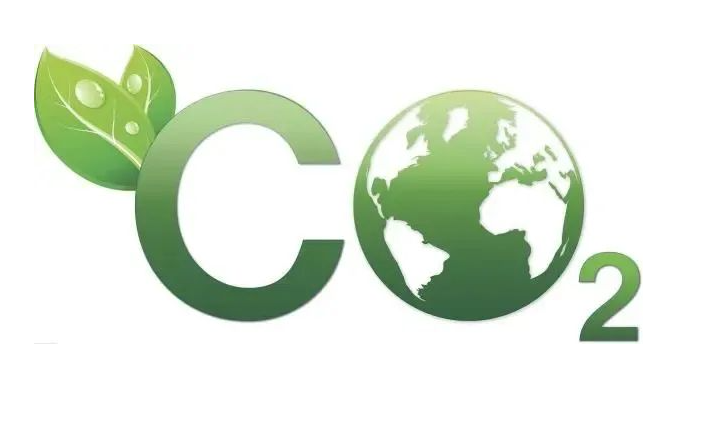The 2022 carbon footprint evaluation report of Shandong Weima Pumps Manufacturing Co., LTD.
2023/05/25 08:58

1. Product Carbon Footprint (PCF) Introduction
In recent years, the greenhouse effect and climate change have become the focus of global attention, and the new term "carbon footprint" is more and more widely used in the world. Carbon footprint is usually divided into three levels: project level, organization level and product level. Product Carbon Footprint (PCF) refers to the measurement of the sum of greenhouse gas emissions of a product at each stage of its life cycle, that is, from raw material extraction, product production (or service provision), distribution, use to final disposal/recycling The accumulation of various greenhouse gas emissions in multiple stages such as utilization. Greenhouse gases include carbon monoxide (CO2), methane (CH4), nitrous oxide (N2O), hydrofluorocarbons (HFO), perfluorocarbons (PFC) and nitrogen trioxide (NF3). The calculation result of product carbon footprint is the weighted sum of various greenhouse gas emissions in the product life cycle, expressed in carbon dioxide equivalent (CO2e), and the unit is kgCO2e or gCO2e. Global Warming Potential (GWP) is the carbon dioxide equivalent value of various greenhouse gases, usually using the value provided by the United Nations Intergovernmental Panel on Climate Change (IPCC). Currently, this set of factors is widely used globally. use.
Product carbon footprint calculations only include the greenhouse gas portion of a full life cycle assessment (LCA). Based on the evaluation method of LCA, a variety of carbon footprint assessment guidelines and requirements have been established internationally for product carbon footprint certification. There are currently three widely used carbon footprint assessment standards:
(1) "PAS2050: 2011 Life Cycle Greenhouse Gas Emissions Evaluation Specification for Goods and Services", which was developed by the British Standards Institution (BSI) and the Carbon Trust (Carbon Trust), the British Department of Food and Rural Affairs (Defra) Jointly released, it is the earliest standard in the world with specific calculation methods, and it is also the most widely used product carbon footprint evaluation standard;
(2) "Greenhouse Gas Protocol: Product Life Cycle Accounting and Reporting Standard", which is jointly developed by the World Resources Institute (VRI) and the World Business Council for Sustainable Development (World Business Council for Sustainable Development, Product and supply chain standards issued by WBCSD for short;
(3) ISO/TS 14067:2013 Greenhouse Gases—Product Carbon Footprint—Requirements and Guidelines for Quantification and Information Exchange. This standard uses PAS 2050 as the seed file and is compiled and released by the International Organization for Standardization (ISO). The purpose of the Product Carbon Footprint Accounting Standard is to establish a consistent, internationally recognized method for assessing the carbon footprint of products.
2. Goal and scope definition
2.1 Introduction of the company and its products
Shandong Weima Pump Industry Co., Ltd. was founded in 1994. It covers an area of 65810.7 square meters and has a registered capital of 56.46 million yuan. It is specialized in oil and gas lifting equipment technology research and development, program formulation, equipment manufacturing and engineering services. It can provide Oilfield service companies with complete sets of equipment and package services will rank first in the industry in 2022, with a market share of 26.3%. It is a national high-tech enterprise, a national specialization and special new key small giant enterprise, a national individual champion (product) enterprise, a national worker pioneer commendation enterprise, a Shandong gazelle enterprise, a Shandong manufacturing individual champion enterprise, and a high-end enterprise in Shandong A leading company in equipment manufacturing.
The company has applied for and established many patents around the oil and gas lifting technology, especially the technology related to oil well pump products. Now it has 67 effective patented technologies, including 6 invention patents and 61 utility models, all of which are independent intellectual property rights of the company, and all of them have realized the transformation and industrialization of achievements. It has successively undertaken more than 30 national, provincial and municipal scientific research projects; 5 technologies have reached the international advanced level, and 15 technologies have reached the domestic leading level; it has won various awards such as the Golden Bridge Award in China's science and technology market, and the Shandong Provincial Equipment Manufacturing Technology Innovation Award. More than 20 items; more than 20 enterprise standards have been formulated successively.
2.2 Research purpose
The purpose of this study is to obtain the carbon footprint of Shandong Weima Pump Industry Co., Ltd. in the life cycle process of "one ton of raw materials". Effectively communicate with consumers, improve reputation and strengthen the brand, thereby effectively reducing greenhouse gas emissions; at the same time, provide a good data basis for effective communication between product buyers and third parties.
2.3 Carbon Footprint Scope Description
The types of greenhouse gases checked in this report include the greenhouse gases listed in the 5th assessment report of IPCC, such as carbon dioxide (CO2), ozone (O3), nitrous oxide (N2O), methane (CH4), hydrochlorofluorocarbons (CFCs, HFCs, HCFCs), perfluorocarbons (PFCs) and sulfur hexafluoride (SF6), etc., and the method proposed in the IPCC Fifth Assessment Report (2013) was used to calculate the GWP value of the product production cycle.
For the convenience of light weight, the calculation of carbon footprint is defined as the carbon footprint produced by consuming 10,000 tons of raw materials.
The verification period is from January 1, 2021 to December 31, 2021.
The inspection site is Shandong Weima Pump Industry Co., Ltd. (Address: No. 008, Canglongquan Street, Laiwu High-tech Zone, Jinan City, Shandong Province).
According to the actual situation of the enterprise, the verification team used PAS2050 as the evaluation standard in the product carbon footprint verification process, and the inspection boundary can be divided into two types: B2B (Business-to-Business) and B2C (Business-to-Consumer).
The system boundary of this inventory is of the "from cradle to gate" type. In order to realize the above-mentioned functional units, the system boundary of product manufacturing is shown in the figure above (the process in the dotted border is not included in the calculation of greenhouse gas emissions). This report excludes greenhouse gas emissions from:
(1) Greenhouse gas emissions from personnel-related activities are not counted;
(2) Emissions from factories, warehouses, offices, etc. are not included due to the complex influence of various factors such as region and factory arrangement;
3. Data Collection
According to the requirements of the PAS 2050: 2011 standard, the inspection team set up a carbon footprint inspection working group to conduct an inventory of the carbon footprint of Weima Pumps consuming 10,000 tons of raw materials. The working group first prepares for the product carbon footprint inventory work, then determines the work plan and scope, and completes the greenhouse gas emission inventory work through the process of reviewing documents, on-site visits, and telephone communication. The preparatory work mainly includes: understanding the basic situation of the product, the production process and raw material suppliers; and researching and collecting some original data, mainly including: the production report of the enterprise, financial data, etc., to ensure the integrity and accuracy of the data , and in the later stage of report preparation, a large number of databases, literature reports, and mature and available LCA software were consulted to obtain emission factors.
3.1 Primary Activity Level Data
According to the requirements of the PAS2050:2011 standard, the primary activity level data is applied to all processes and materials, that is, processes and materials that are owned, operated or controlled by the organization that produces the carbon footprint. The primary activity level data in this report includes all energy and material consumption in the product life cycle system (material input and output, energy consumption, etc.). These data are collected and measured from the enterprise or its suppliers, and can truly reflect the input of energy and materials throughout the production process, as well as the output of products/intermediate products and waste.
3.2 Secondary activity data
According to the requirements of the PAS2050:2011 standard, it is necessary to use secondary data from sources other than direct measurements whenever primary activity data are unavailable or of questionable quality (e.g. non-responsive measuring instruments). The main source of secondary activity data in this report is data in databases and literature.
The categories and sources of data used in the calculation of product carbon footprint are shown in Table 2:
Table 1: Carbon footprint inventory data categories and sources
Data category Activity Data Sources
primary activity data Input Main material consumption Production report
energy electricity production report natural gas production report
Secondary Activity Data transportation Main material transportation distance Estimated based on manufacturer's address
emission factor main manufacturing Database and Documentation Main material transportation
4. Carbon Footprint Calculation
The formula for a product's carbon footprint is the sum of all materials, energy and waste from all activities throughout the product's life cycle multiplied by its emission factor. Its calculation formula is as follows:
Among them, CF is the carbon footprint, P is the activity level data, Q is the emission factor, and GWP is the global warming potential value. The emission factors come from the CLCD database and related literature. Since there are no emission factors in the database of some materials, the values are all from the emission factors of similar materials.
Table 2: Product energy level data in 2022
Activity Level Data Name activity level data
Electricity (unit: Kwh) 3158051
Natural gas (m3) 6622.5
In 2022, the company will produce 40,000 oil well pumps, with an output value of 163.1013 million yuan.
6. Conclusions and Recommendations
This report chooses the form of "production process carbon emissions" to calculate the product carbon footprint. According to the carbon footprint indicators of the above products, it can be known that in 2022, the carbon footprint of the power consumption of the production unit product "oil pump" is 6.254KgCO2/kWh, and the consumption of natural gas is 7.789tCO2/tce.
In order to enhance brand competitiveness and reduce product carbon footprint, the suggestions are as follows:
1. In the case of little price difference of raw materials, try to select suppliers with small carbon footprint of raw materials.
2. Use renewable energy instead of non-renewable energy to reduce energy waste and reduce carbon dioxide emissions.
7. Conclusion
Low-carbon development is an inevitable choice for enterprises to survive and develop in the future. The accounting of product carbon footprint is the first step for enterprises to realize greenhouse gas management and formulate low-carbon development strategies. Through the carbon footprint accounting of the product life cycle, enterprises can understand the emission sources, clarify the emissions of each production link, improve the industrial layout of enterprises, reduce material consumption and energy consumption, and lay a foundation for formulating reasonable emission reduction targets and development strategies. Through product carbon footprint accounting, the comprehensive competitiveness of enterprises can be improved, and it is an important starting point to realize industrial upgrading and promote the healthy development of enterprises.




